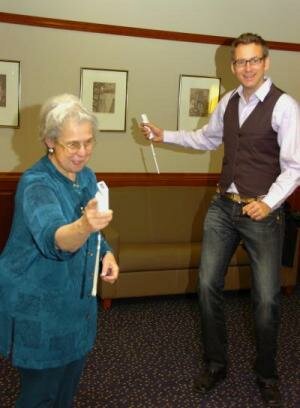Video Game Research Project to Help Blind Children Exercise
 VI Fit, a project at the University of Nevada, Reno, helps children who are blind become more physically active and healthy through video games. VI Fit, a project at the University of Nevada, Reno, helps children who are blind become more physically active and healthy through video games.
The human-computer interaction research team in the computer science and engineering department has developed a motion-sensing-based tennis and bowling exergame.
"Lack of vision forms a significant barrier to participation in physical activity and consequently children with visual impairments have much higher obesity rates and obesity-related illnesses such as diabetes," Eelke Folmer, research team leader and assistant professor in the computer science and engineering department, said.
Exergames are a new type of video game that use physical activity as input and are considered powerful weapons in the fight against obesity. Unfortunately, exergames have not yet been accessible to children with visual impairments, although it is evident they could benefit from them the most.
"Our games are adaptations of the popular Nintendo Wii Sports exercise games that have been modified so they can be played without visual feedback," Folmer said.
VI Tennis and VI Bowling are the first of several games to be made available. VI Tennis implements the gameplay of Wii sports tennis providing audio and vibrotactile cues that indicate when to serve and when to return the ball. It can be played against the computer or against a friend using two Wii remotes.
"VI Tennis was evaluated at Camp Abilities in New York with 13 children who were blind," Folmer said. "We found our game to engage children into levels of active energy expenditure that were high enough to be considered healthy, which shows the feasibility of using video games as a health-intervention method."
The gameplay of Wii sports bowling is implemented through VI Bowling with a novel motor-learning feature that allows players to find the direction in which to throw their ball using vibrotactile feedback. Audio and speech effects are used to indicate the result of each throw.

"Project leader Eelke Folmer, right, plays VI Fit tennis with Frieda Aizenman in a demonstration, at the University of Nevada, Reno, of the exergame he and his team have developed with the idea of increasing physical activity for visually impaired children. (Credit: Photo by Mike Wolterbeek, University of Nevada, Reno)"
Source: University of Nevada
|